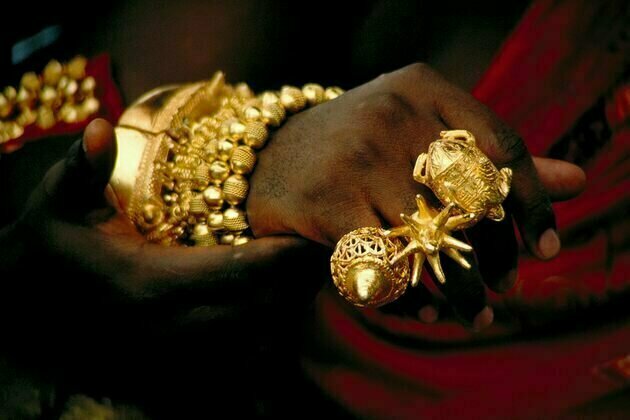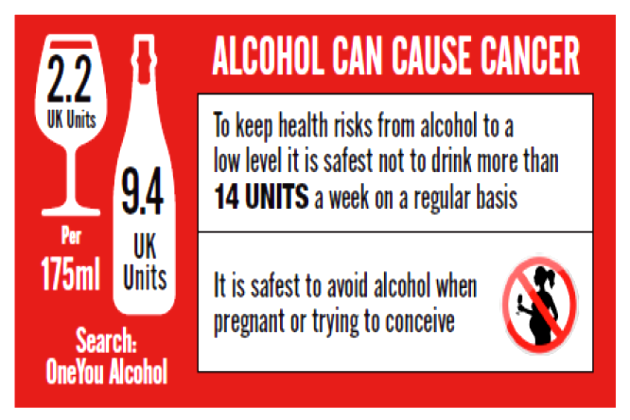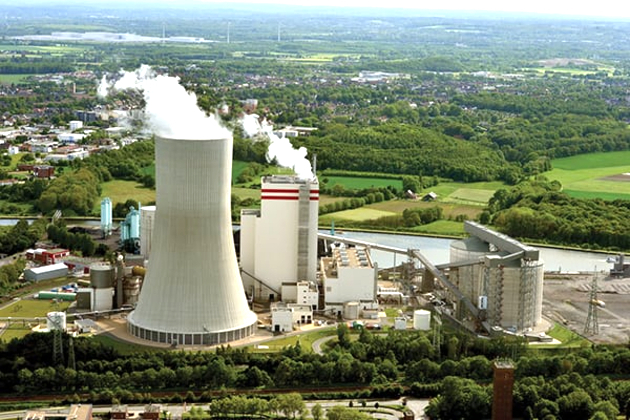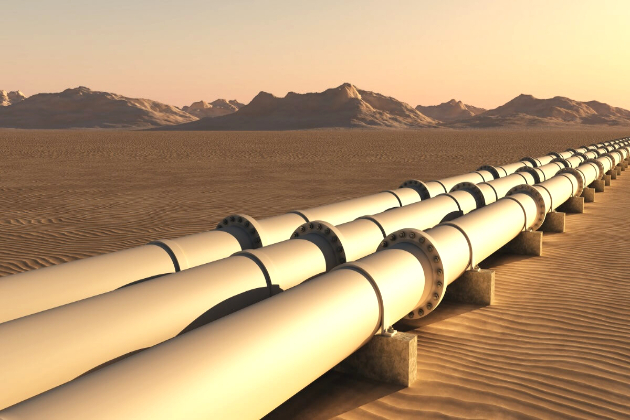Why is there so much gold in west Africa?
The Conversation
17 Feb 2025, 13:06 GMT+10

Militaries that have taken power in Africa's Sahel region - notably Mali, Burkina Faso and Niger - have put pressure on western mining firms for a fairer distribution of revenue from the lucrative mining sector.
Gold is one of the resources at the heart of these tensions. West Africa has been a renowned gold mining hub for centuries, dating back to the ancient Ghana empire, which earned its reputation as the "Land of Gold" because of its abundant reserves and thriving trade networks. The region remains a global leader in gold production. As of 2024, west Africa contributed approximately 10.8% of the world's total gold output.
But why is there so much gold in this region? The Conversation Africa asked geologist Raymond Kazapoe to explain.
The simple answer here is that we are not certain. However, scientists have some ideas.
Gold, like all elements, formed through high energy reactions that occurred in various cosmic and space environments some 13 billion years ago, when the universe started to form.
However, gold deposits - or the concentration of gold in large volumes within rock formations - are believed to occur through various processes, explained by two theories.
The first theory - described by geologist Richard J. Goldfarb - argues that large amounts of gold were deposited in certain areas when continents were expanding and changing shape, around 3 billion years ago. This happened when smaller landmasses, or islands, collided and stuck to larger continents, a process called accretionary tectonics. During these collisions, mineral-rich fluids moved through the Earth's crust, depositing gold in certain areas.
A newer, complementary theory by planetary scientist Andrew Tomkins explains the formation of some much younger gold deposits during the Phanerozoic period (approximately 650 million years ago). It suggests that as the Earth's oceans became richer in oxygen during the Phanerozoic period, gold got trapped within another mineral known as pyrite (often called fool's gold) as microscopic particles. Later, geological processes - like continental growth (accretion) and heat or pressure changes (metamorphism) released this gold - forming deposits that could be mined.
Most gold production and reserves in west Africa are found within the west African craton. This is one of the world's oldest geological formations, consisting of ancient, continental crust that has remained largely unchanged for billions of years.
The craton underlies much of west Africa, spanning parts of Mali, Ghana, Burkina Faso, Cote d'Ivoire, Guinea, Senegal and Mauritania. In fact, most west African countries that have significant gold deposits have close to 50% of their landmass on the craton. Notably, between 35% and 45% of Ghana, Mali and Cote d'Ivoire's territory sits on it - which is why these areas receive so much attention from gold prospectors.
Gold deposits were formed within west Africa's craton rocks during a major tectonic event, known as the Eburnean Orogeny, 2.2 billion to 2.08 billion years ago. This event was accompanied by the temperature, pressure and tectonic conditions which promote gold mineralisation events. Most of the gold resources in the west African craton are found within ancient geological formations formed by volcanic and tectonic processes about 2.3 billion to 2.05 billion years ago. These are known as the Rhyacian Birimian granitoid-greenstone belts.
These gold-bearing belts in Ghana and Mali are by far the most endowed when compared with other countries in the region. Ghana and Mali currently, cumulatively account for over 57% of the combined past production and resources of the entire west Africa sub-region.
Ghana is thought to be home to 1,000 metric tonnes of gold. The country produces 90 metric tonnes each year - or 7% of global production. Gold production in Mali reached around 67.7 tonnes in 2023. Mali has an estimated 800 tons of gold deposits.
By comparison, the world's two largest gold producers are China (which mined approximately 370 metric tonnes of gold in 2023) and Australia (which had an output of around 310 metric tonnes in 2023).
Gold was traditionally found by panning in riverbeds, where miners swirled sediment in water to separate the heavy gold particles, or by digging shallow pits to extract gold-rich ores. Over time, methods have evolved to include geochemical exploration techniques, advanced geophysical surveys, and chemical extraction techniques, like cyanide leaching.
Geological mapping techniques are always evolving, and at the moment, there is a lot of interest in combining remote sensing data with cutting-edge data analytics methods, like machine learning. By combining these two methods, geologists can get around some of the problems caused by traditional methods, like the reliance on subjective judgement to create reliable maps and the need to spend money prospecting in areas with low chances of success.
In recent years, deep learning computer techniques have made significant progress. They examine various geological data-sets to reduce uncertainty and increase the chances of finding gold mineralisation through advanced artificial intelligence techniques. These methods have proved highly beneficial in identifying specific features and discovering new mineral deposits when applied to remote sensing data.
Another method, which I've researched and which could serve as a complementary gold exploration tool, is the use of stable isotopes. Stable isotopes are elements - like carbon, hydrogen and oxygen - that do not decay over time. Some are responsible for helping to carry gold, in fluids, through rocks to form the deposits. As the gold-bearing fluids interact with the rocks, they transfer the stable isotopes to the rocks, thereby imbuing them with their unique signature. The thinking here is to identify the signature and then use it as a proxy for finding gold, since gold itself is hard to identify directly.
Advancements in analytical techniques have reduced the cost, volume, and time involved. This makes it a viable alternative to geochemical approaches - the most widely used and relatively efficient method.
 Share
Share
 Tweet
Tweet
 Share
Share
 Flip
Flip
 Email
Email
Watch latest videos
Subscribe and Follow
Get a daily dose of Africa Leader news through our daily email, its complimentary and keeps you fully up to date with world and business news as well.
News RELEASES
Publish news of your business, community or sports group, personnel appointments, major event and more by submitting a news release to Africa Leader.
More InformationInternational
SectionWHO urges tobacco-style warnings on alcohol in Europe
GENEVA, Switzerland: The World Health Organization is pushing for bold, tobacco-style warning labels on alcoholic beverages across...
US judge approves extradition of Turkish author and son for car crash
BOSTON, Massachusetts: A U.S. judge has ruled that a Turkish author and her son can be sent back to Turkey to face charges. The son...
New York confirms first case of new mpox strain
NEW YORK CITY, New York: The New York State Department of Health has confirmed its first case of a new mpox strain, increasing concerns...
NASA swaps astronaut capsule to speed up Starliner crew’s return
WASHINGTON, D.C.: NASA changed the astronaut capsule for its next routine flight to the International Space Station (ISS). This change...
Fort Bragg name restored as defense secretary reverses 2023 change
FAYETTEVILLE, North Carolina: U.S. Defense Secretary Pete Hegseth has changed the name of the Army base Fort Liberty back to its original...
US Navy ships sail through Taiwan Strait in first under Trump
BEIJING/TAIPEI: Two U.S. Navy ships navigated the Taiwan Strait this week, marking the first such operation since President Donald...
Business
SectionIgloo recalls over a million coolers over handle defects
NEW YORK CITY, New York: Igloo is recalling over a million of its rolling coolers across the U.S., Mexico, and Canada after reports...
China accelerates coal expansion, surpasses 100GW in 2024
BEIJING, China: China's coal power expansion surged in 2024, with nearly 100 gigawatts of new coal plant capacity breaking ground—the...
Nissan faces significant loss after scrapping Honda integration
TOKYO, Japan: Nissan is bracing for a steep financial loss as it scraps plans for a business integration with Honda, the company announced...
UK trader wins Supreme Court fight against US extradition
LONDON, U.K.: A UK-based securities trader accused of insider dealing in the United States has won his legal battle against extradition,...
Turkmenistan seals gas deal with Turkey via Iran, boosting energy ties
ASHGABAT, Turkmenistan: Turkmenistan has finalized an agreement to supply natural gas to Turkey through Iran, marking a significant...
Warner Bros & Jinjiang to bring Harry Potter Studio Tour to Shanghai
SHANGHAI, China: Warner Bros has partnered with Chinese hospitality giant Jinjiang International to develop a Harry Potter Studio Tour...













